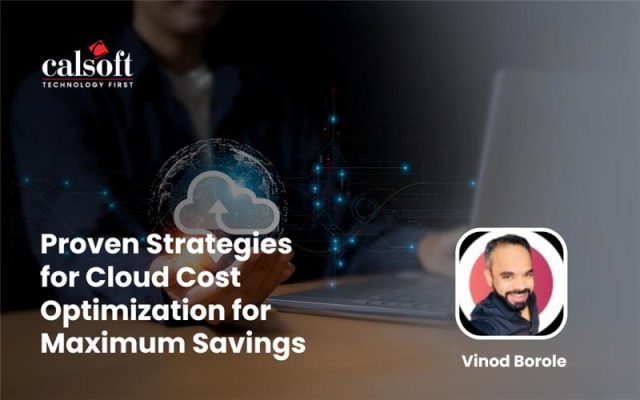Last year Gartner highlighted the top 10 strategic technology trends which would have maximum impact in 2018 over organizations around the world. Blockchain was one of them. Most of us became aware of Blockchain when it was used for infrastructure in facilitating digital currency (popular use case BitCoin, etc.). Like Gartner, other research firms have also highlighted the fact that Blockchain can be utilized as architecture for IT infrastructure which will reduce operational cost and time consumption for business processes. The core benefit organizations can realize is that of Blockchain reducing the risk of managing a central database. Every node or participant will be maintaining records of all transactions placed in distributed and decentralized network. Based on such benefits enterprises have started evaluating their applications in business operations.
As per a recent survey by Juniper research, it has been seen that – realization of dramatic diversification of use cases – blockchain have driven 65% of enterprises (having more than 10,000 employees) to initiate blockchain deployment in businesses operations. Out of that 25% have moved forward from proof of concepts stage to trails or are in a process to launch implementation. The survey involved 200 participant companies who spent more than $100,000 on the blockchain project.
Blockchain Use Cases for Food Safety, Telecom & Banking
Blockchain has been highlighted mainly because of its successful implementation in digital currency use cases. But recently, I came across some other use cases like food safely, telecom and banking.
Adoption of blockchain for Food Safely

Walmart leveraged the IBM blockchain platform based on hyperledger fabric blockchain for tracking food supply chain globally – from supplier to store. A solution named IBM Food Trust will also be utilized by nine companies other than Walmart. Other nine companies include Nestlé SA, Dole Food Co., Driscoll’s Inc., Golden State Foods, Kroger Co., McCormick and Co., McLane Co., Tyson Foods Inc., and Unilever NV.
Here are a few use cases which Indian government initiated in their digital governance campaign.
Adoption of Blockchain by TRAI:
Telecom Regulatory Authority of India (TRAI) initiated a movement by issuing a regulatory draft to tackle with spam or annoying calls despite being opted in Do Not Disturb (DND) registry. DND implemented in 2010 and millions of subscribers opted in. But spammers or third party vendors managed to get consent from a subscriber in an unethical way to opt out of the facility. TRAI issued a draft to implement distributed ledger (blockchain) for subscribers so to emulate the involvement of third-party spammers.
Full-fledged adoption of blockchain by SBI
SBI is rolling out a full-fledged deployment of blockchain in three finance operations: reconciliation, remittances, and trade. Deployment is scheduled for FY2019 as per information was given by SBI CIO. Source
Implementation concerns
Despite having several PoCs and trials done by various enterprises from different industry verticals blockchain has few implementations and operational challenges which have a significant impact on proposed use cases. In my view, interoperability and transition to new blockchain focused infrastructure is the primary concern for organizations who are evaluating this technology for operations.
Interoperability within two networks means – anyone in two different blockchain network can transact, read, interact and interpret data which is cross-compatible. This is a crucial factor where all blockchain network need to work on. Let’s understand two cases of interoperability blockchain may face.
Interoperability between new and legacy infrastructure
Legacy infrastructure was characterized by having a central database which is shared between systems connected in a network. Transitioning from centrally managed to distributed or decentralized network is concerning for organizations as there is a major roadblock that is posed to achieve the blockchain promise. Legacy infrastructure needs to go through drastic upgrades or changes before getting compatible and fully functional to operate as distributed ledger network.
Interoperability between different blockchain networks
Interoperability occurs while communication carries on between two blockchain based networks. The ideal example can be – someone within Bitcoin holding BTC and wants to transact on ethereum blockchain environment which is compatible ETH value. The process is possible but becomes tedious as it involves registering and other manual steps. This issue is not much unique as blockchain networks generally operated as standalone networks dedicated for a particular purpose. But there has to be an interoperable solution in place for a blockchain to reach its full potential for delivering benefits for business operations and transactions.
Due to rapid maturity in the blockchain technology it was widely adopted by the organization, while few solutions emerged to address the interoperability between different blockchain. Some of the popular solutions are: Blacknet, Cosmos, Polkadot, Aion, Lamden, Metronome, ICON, Wanchain, ARK, Quant Network, Block Collider
Summary
Almost every tech giant has started initiatives to offer solutions around blockchain due to huge demand by every organization that entails:
- Need for enterprises to reduce time required for cross-border operations,
- Reliable transactions of money and legal assets ensuring robust security,
- Need for digital transformation of overall ecosystem keeping capex and opex cost within budget
- Ensuring and improving privacy in the connected world
Like any other technology, blockchain will mature with time and involvement by private vendors and open source communities. As per Gartner’s hype cycle for emerging technologies published in 2017, it will take 5 to 10 years more for blockchain to get implemented to its full potential.
[Tweet “Adoption of Blockchain and Interoperability Challenges ~ via @CalsoftInc”]






